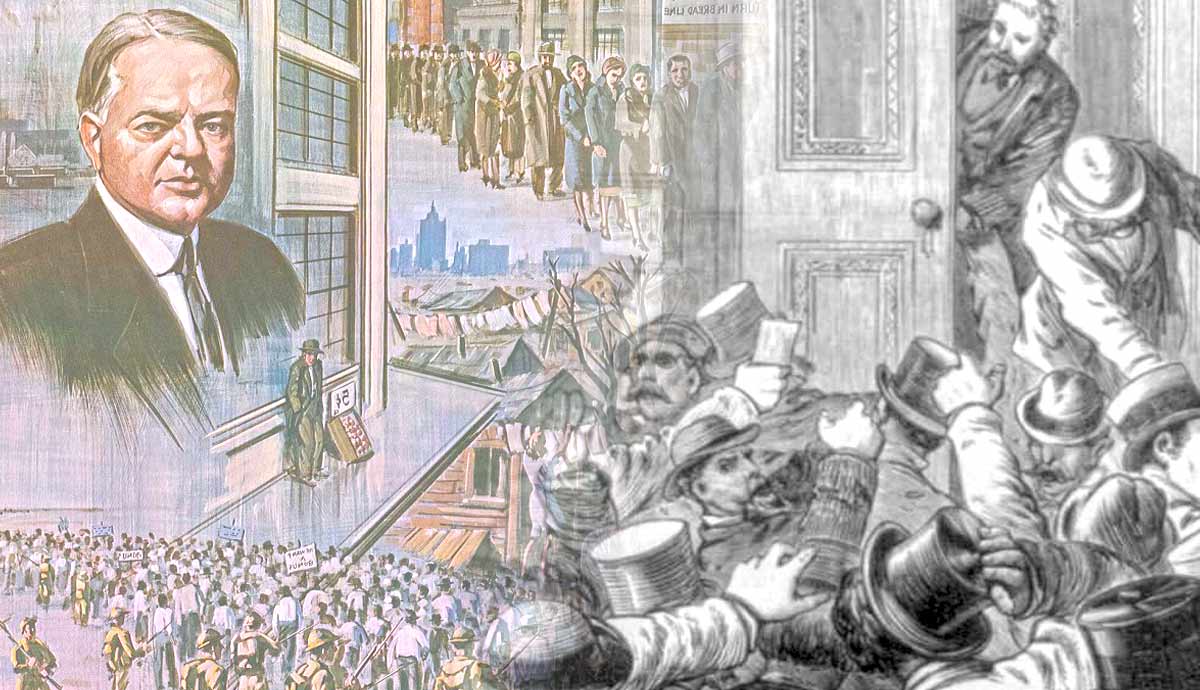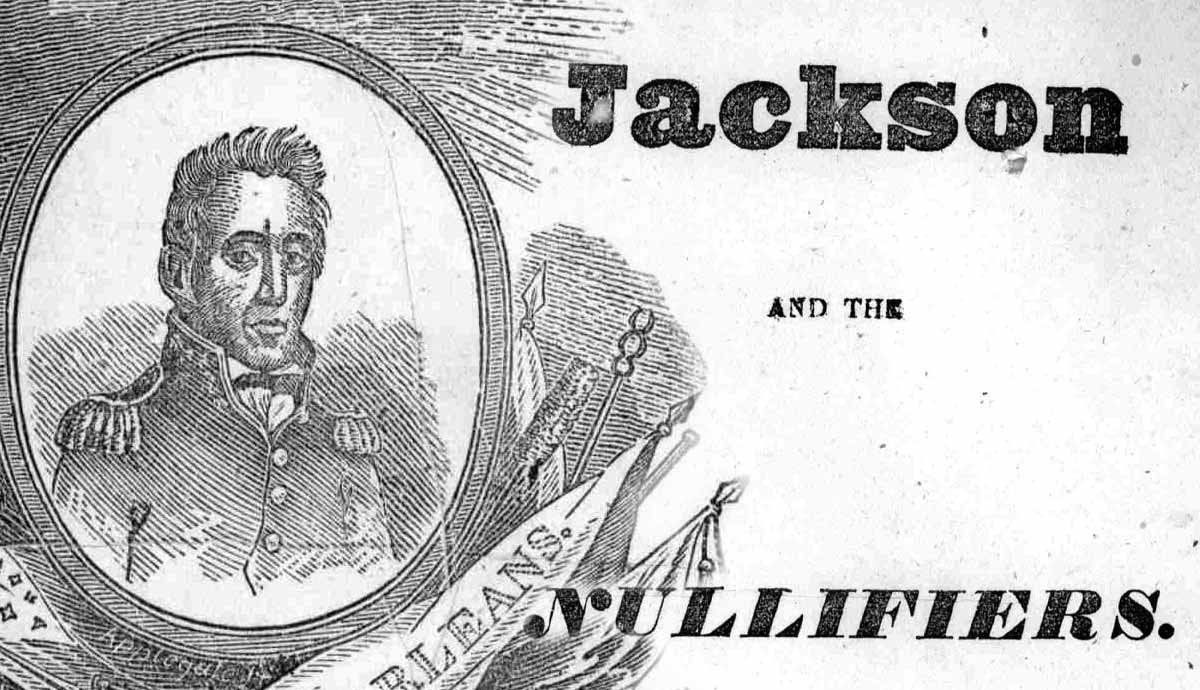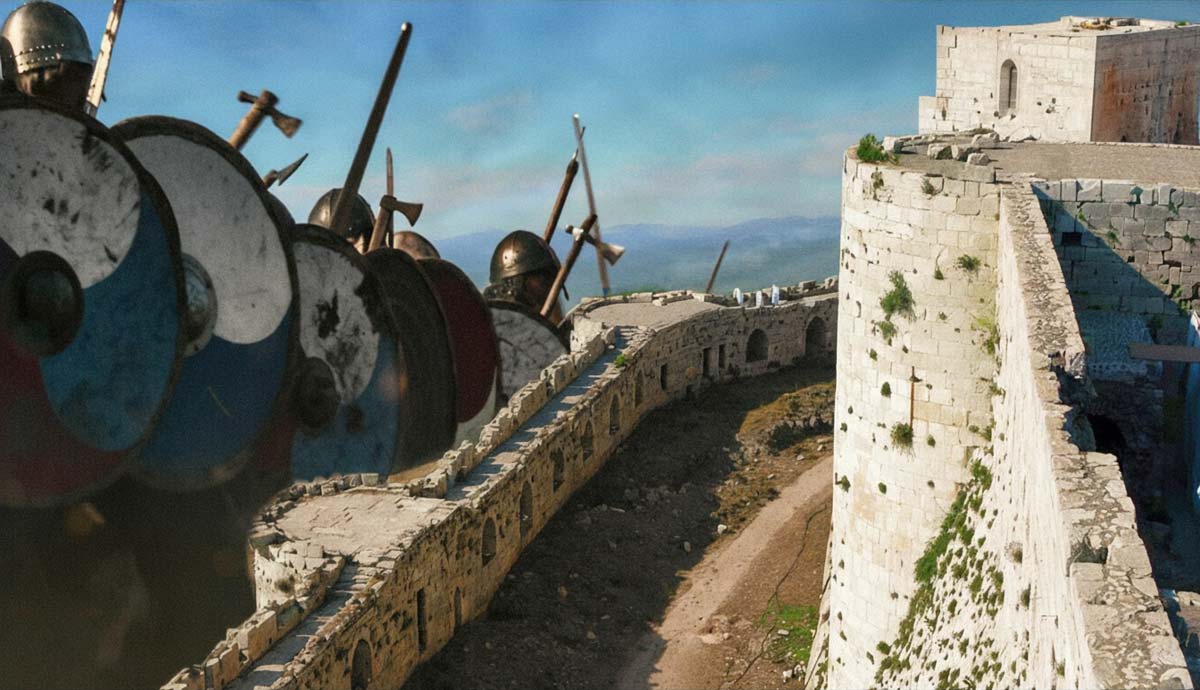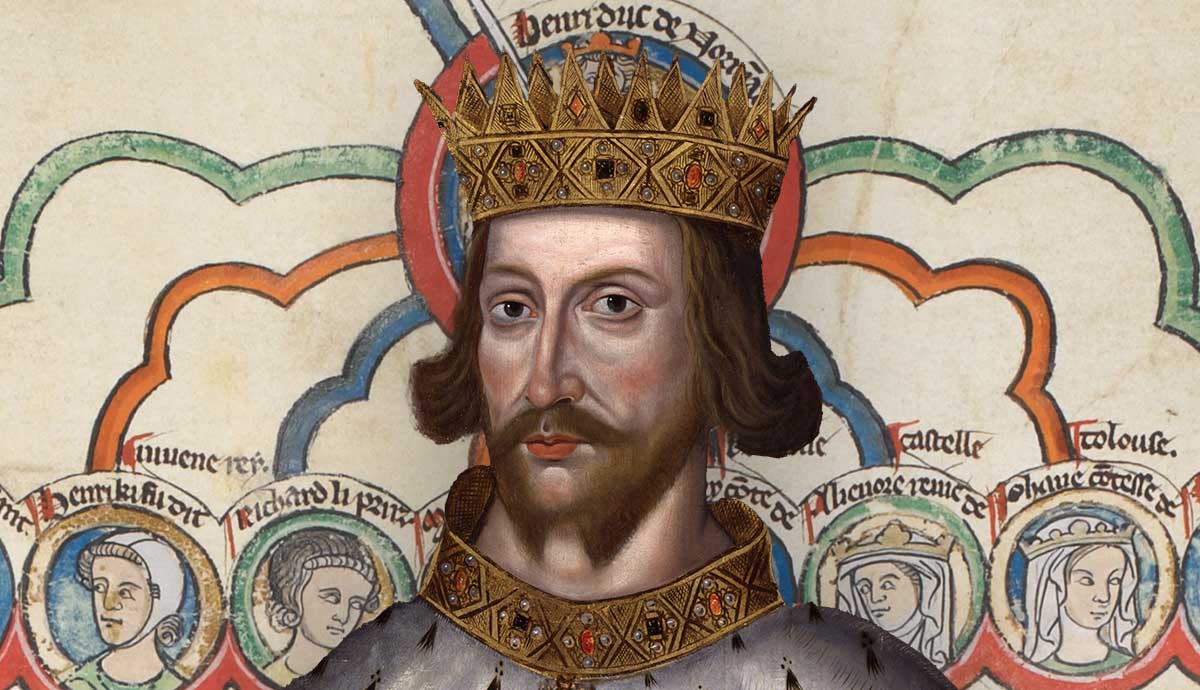
Everyone knows that US President Herbert Hoover was defeated in a landslide because of the Great Depression. But do financial fluctuations really have a significant impact on presidential elections?
From the first measurable financial panics after the Civil War to today, we will explore the effects of the economy on who wins—or loses—the White House. Are “pocketbook issues” the number-one determinant of how citizens vote? Can an incumbent ever win a second term while a recession is going on? Does a strong economy always guarantee a victory for the party holding the Oval Office? We will cover all that and more!
Financial Panic of 1873 and Ulysses S. Grant

The North enjoyed a booming economy in the aftermath of the American Civil War (1861-65) thanks to massive federal government wartime spending. However, despite the massive increase in government power during the war, there was still no government oversight of banks. As the nation expanded westward following the war, tremendous amounts of money were loaned to railroads and other companies. In September 1873, companies were unable to pay back their loans as planned, sparking a financial panic. Banks began calling debts, forcing businesses and individuals to pay—even if they weren’t ready.
Southern farmers were also hit hard by the financial crisis, which deepened their resentment of Reconstruction. In both the North and South, the financial panic led to reduced city and state budgets, cutting spending on things like public education. Altogether, the Panic of 1873 came to hurt the reputation of US President Ulysses S. Grant, who was in his second term. During the recession, Grant’s decision to veto a bill calling for the expansion of the money supply helped create the reputation of the Republican Party as fiscally conservative. Grant’s Republican Party fared poorly in the 1874 midterm elections, and the former Army general decided not to pursue a third term in the White House.
Financial Panic of 1893 and Grover Cleveland

An even worse economic recession was triggered by a second financial panic twenty years later. Back in office, having won the Oval Office in 1892 as the first US president to serve non-consecutive terms, was Grover Cleveland. Despite being a Democrat, Cleveland was also a fiscal conservative and, like Ulysses S. Grant before him, kept the United States on the gold standard. As an economic recession worsened, Cleveland did little, not believing it was the federal government’s role to interfere with the economy. Simultaneously, Cleveland’s authorization to use force to break up the Pullman Strike in 1894 hurt his reputation among labor unions.
The weak economy and Cleveland’s anti-labor image hurt him in the face of a growing populist movement. He had won his second term in 1892 because the populists took away votes from his Republican opponent, but in 1896, the Democratic Party wanted to embrace the populists. Thus, the party largely abandoned its incumbent president and selected 36-year-old William Jennings Bryan, a staunch populist, as its presidential nominee. Jennings would be the Democratic presidential nominee four times…and win the White House zero times. Cleveland’s legacy, due to the 1890s recession, remains poor.
Financial Panic of 1907 and Theodore Roosevelt

Another financial panic occurred in 1907, but this time, the US president was ready to act. Private sector bankers and trusts rushed to stop the panic in late October by lending money to cover defaults, but the run on banks continued as frightened depositors rapidly pulled out their money. People began demanding government oversight of the banking system, which had been prone to collapses and bank runs. At the time, banks were entirely private with no government insurance, meaning a bank failure left depositors with nothing.
President Theodore Roosevelt criticized the role of trusts and large banks in destabilizing the banking system. However, the president agreed to corporate mergers in the aftermath of the Panic of 1907 as a way to eliminate debts, with the larger corporation paying off the debt of the competitor it purchased. This action may have helped stabilize the panic, which was intense but brief. Ultimately, Roosevelt’s popularity was relatively undamaged by the brief panic, though some felt he had been gullible regarding allowing the mergers. Roosevelt chose not to run for a third term in 1908, and his handpicked successor, William Howard Taft, kept the White House Republican.
1932: Great Depression Sinks Herbert Hoover

The Panic of 1907 led to the creation of the Federal Reserve System in 1913. While “the Fed” could oversee the banking system in general, there was still no deposit insurance. If a bank failed, it took its depositors’ funds with it. This happened in droves during the beginning of the Great Depression. The stock market crash of 1929 triggered calls for loans, which many people could not pay back. This eventually triggered widespread bank runs, which worsened the Depression. By 1932, when incumbent Republican president Herbert Hoover was up for re-election, unemployment was as high as 25 percent, and homeless people lived in slums known as Hoovervilles.

Similar to Grover Cleveland before him, Hoover supported laissez-faire economics and did not believe in direct federal intervention. Although he did pass some reforms, these were mostly directed toward lending money to businesses. Common citizens felt that Hoover did not care about their plight and swung quickly to Democratic rival Franklin D. Roosevelt (FDR). Famously, Roosevelt (fifth cousin of predecessor Theodore) promised immediate action upon becoming president. He pledged a “New Deal” for the American people, and they put him in the White House in 1932 in a record landslide. FDR delivered and won three more terms in office.
1976-80: Stagflation Sinks Gerald Ford…Then Jimmy Carter

While FDR’s New Deal reforms helped significantly limit future financial panics and deep depressions, they could not stop the business cycle and periodic recessions, which were still painful. In 1973, the US first experienced stagflation during the OPEC oil embargo following the Yom Kippur War, where the US supported Israel and enraged Arab oil producers.
This came immediately after a period of rising inflation beginning in the mid-1960s when high government spending during the Space Race and Vietnam War kept unemployment low but prices rising. The double-whammy of high inflation plus stagflation from oil prices that remained high after the embargo ended in 1974 created an economic malaise that helped sink Republican President Gerald Ford’s re-election in 1976.
Ford could not fix inflation with conservative reforms, and Democratic successor Jimmy Carter did not fare much better. While Ford had focused more on curbing inflation by raising interest rates and cutting government spending, Carter urged an increase in the money supply to help reduce unemployment. He also deregulated many industries under the belief that these regulations cost lots of money, thus contributing to inflation. Unfortunately for Carter, this did not work either, and voters went with the challenger once again—Republican nominee Ronald Reagan—in 1980.
1992: Recession of 1991 Sinks George Bush Sr.

Reagan served two terms, thanks largely to Reaganomics finally boosting the US economy in the nick of time for his 1984 re-election. His vice president, George Bush Sr., handily kept the White House Republican in 1988. In 1991, Bush enjoyed sky-high public opinion polls thanks to his quick and overwhelming victory in the brief Gulf War. The Cold War was also rapidly grinding to an American victory as the Soviet Union collapsed—was Bush a shoo-in for re-election in 1992? Despite Bush’s foreign policy victories, most voters were looking at their pocketbooks.
Foreign policy victories did not stave off a brief economic recession in 1991, which hurt Bush’s re-election bid. Democratic rival Bill Clinton shrewdly focused his campaign almost entirely on the economy and avoided challenging Bush on foreign policy. Ultimately, Bush lost in 1992 to a young and media-savvy Clinton, though pundits have long debated what cost Bush the Oval Office. Was it the presence of Texas billionaire Ross Perot, the most powerful independent presidential candidate since Theodore Roosevelt 80 years earlier? Or was it the 1991 recession? Regardless, economic troubles kept Bush from winning in a landslide, which is what his Gulf War popularity numbers indicated eighteen months earlier.
2008: Great Recession Hurts Republican Chances

Seventeen years later, a much worse recession struck during the second presidential term of Bush Sr.’s son, George W. Bush. In 2007, the housing market began to crash, triggering a wider financial crisis in 2008…which triggered the Great Recession. Banks and mortgage companies had been giving home loans with little due diligence, leading to thousands upon thousands of mortgages being held by Americans who could not easily afford to pay them. In 2007, this bubble collapsed, taking banks and mortgage companies with it. Fortunately for George W. Bush, he was term-limited and was not running again in 2008.
However, public anger did trickle onto Bush’s successor, Republican presidential nominee John McCain. The 2008 financial crash, which included a stock market crash, happened during the 2008 general election. Republicans got most of the blame, leading to largely negative media coverage of McCain. As the economy swiftly worsened, McCain did little to restore public faith in Republican economic credentials.
Democratic rival Barack Obama won a solid victory that November. Obama enjoyed continued economic growth during both of his terms, facing no recessions (similar to the growth enjoyed by his predecessor, Bill Clinton).
1952, 1960, 2000*, 2016*: Strong Economy Doesn’t Guarantee Win for Incumbent Party

It is pretty clear that economic crises are an easy way to lose re-election. Grant, Cleveland, Hoover, Ford, Carter, and Bush Sr. all directly sank in public popularity due to financial fluctuations and/or economic recessions. George W. Bush, who handed the Republican mantle to John McCain in 2008, would have been in the same boat had he not been limited by the 22nd Amendment. However, the reverse is not a guarantee: it is possible to lose the presidential election even with a strong economy (*though two of the four times this happened was due to the Electoral College and not the popular vote).
In 1952, the US economy was strong. World War II spending had erased the Great Depression, and the ongoing Korean War had driven unemployment to almost record lows. However, the foreign policy woes of the Korean War had led to Democratic president Harry S. Truman opting out of a third-term run. Adlai Stevenson won the Democratic nomination but lost to World War II hero Dwight D. Eisenhower in a landslide that November despite the booming economy.
Eight years later, however, a still-booming economy could not save Eisenhower’s vice president, Richard Nixon, from losing to Democratic nominee John F. Kennedy. In both 2000 and 2016, the Democratic nominee (Al Gore in 2000; Hillary Clinton in 2016) won the popular vote—assisted by two preceding terms of economic growth—but lost in the Electoral College.










